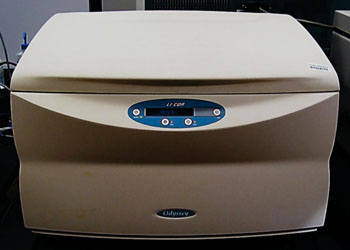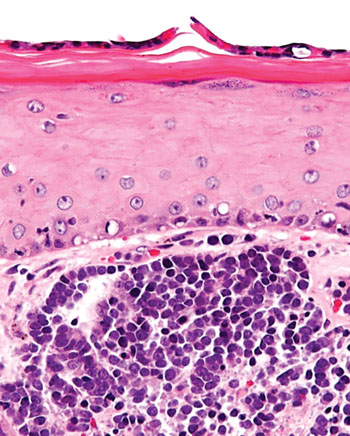Human Polyomaviruses Screened in Cancer Samples
By LabMedica International staff writers
Posted on 07 Mar 2016
A new method to screen tumor samples for the presence of any Human polyomavirus has been created and although human polyomaviruses are commonly found in the population, they generally do not produce noticeable symptoms.Posted on 07 Mar 2016
One type of Human polyomavirus (HPyV), the Merkel cell polyomavirus (MCV), is known to cause a rare form of skin cancer called Merkel cell carcinoma, and other members of the polyomavirus family can induce non-cancer related diseases in people with compromised immune systems.
Scientists at the University of Pittsburgh Medical Center (PA, USA) developed a screening protocol that relied on a cocktail of antibodies that can recognize a specific protein expressed by all polyomaviruses. They screened over 1,000 tumor samples, including cases of lung carcinoma, bladder carcinoma, brain tumors, colon cancer, breast cancer, and malignant melanoma.
The investigators used various methods in their screening protocol that included maintaining cell lines and plasmids; generating HPyV early region expression constructs; hybridoma production; immunohistochemistry (IHC); rolling circle amplification, genomic DNA isolation and sequencing. To isolate DNA from formalin-fixed paraffin sections, tissue samples were collected in a microfuge tube and incubated in 1 mL of xylene on a rotator for 15 minutes. Western blots for proteins were visualized by Odyssey imaging system (LI-COR; Lincoln, NE, USA).
The team developed P-PIT, an IHC-based pan-HPyV-screening method to facilitate the detection of PyV early gene products in tissue samples or arrays. The combination of three different PyV-specific antibodies enabled detection of overexpressed T antigens from all HPyVs reported to date by immunoblotting and IHC methods. The study found no evidence for the involvement of human polyomaviruses in the development of other cancers and helps to resolve questions in the field about whether viruses related to Merkel cell polyomavirus contribute to cancer. The technique will also be valuable in studying other diseases in which polyomaviruses are suspected to play a role.
The authors concluded that the pan-HPyV-screening method they established enables detection of T antigens and thus not only allows detection of lytic infection, but also has the potential to uncover HPyV-related oncogenic processes in which late antigens are not expressed. The P-PIT screening assay will be valuable for addressing the perennial controversy of HPyV-related cancer and other disease associations. The study was published on February 25, 2016, in the Journal of Clinical Investigation Insights.
Related Links:
University of Pittsburgh Medical Center
LI-COR









 assay.jpg)


 (3) (1).png)



